Constantly Calibrating is a weekly topical podcast that focuses on the wide world of nerd/geek culture; Delving into both recent news stories, as well as discussions, debates and interviews related to what's happening in our assorted fields...
Don't wanna be here? Send us removal request.
Photo
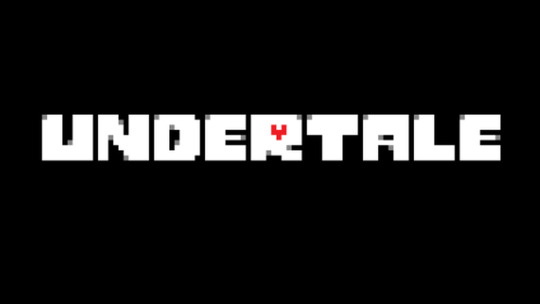
New Post has been published on http://constantlycalibrating.com/undertale-definitely-not-under-the-radar/
Undertale: Definitely Not Under the Radar
If you’re even remotely connected to the gaming community, you may have heard the name “Undertale” in the past couple of months. This RPG from Toby Fox, composer of vast amounts of music for popular webcomic Homestuck and known for producing a mod for Earthbound, has had a huge impact; ranking higher than Fallout 4 in many popular votes.
What if every monster, in every game, was actually peaceful? What if every inhuman abomination; huge, hulking beast; enormous wolf; tall, threatening skeleton could be reasoned with, talked down, and calmed? This is what Undertale might make you think, but if you play the game to its fullest, you might have one more question. What if in every RPG ever, every bone you had crushed underfoot, every disintegrating monster, even the angry frogs who attack you when you first start playing, what if they were all the good guys? And what if, by some cruel twist of fate, you were evil? Slaughtering them all, mercilessly, for experience and gold, because you were trying to stave off boredom.
Warning, this may contain some spoilers. I urge any potential players of the game to experience the story for themselves first.
For anyone who hasn’t heard of the game, or else doesn’t know much about it, I’ll give a summary. Many years ago, a great war between humans and monsters took place, resulting in the humans imprisoning the monsters in a mountain, bound by a barrier. The barrier can only be broken if a force equivalent to seven human souls attacks it. You play as… well I won’t spoil that. But I will say that the main character has fallen into the mountain while out playing/adventuring, and now needs to find a way out.
There are multiple ways to play, coming into three distinct categories: Neutral means killing some and sparing or even befriending others, and pacifist is sparing and befriending all that you can. Most people, if they know enough about the game, will leave it there. They don’t want to have to play the game’s third route:
The “Genocide” run, a play-through that requires you to be pretty emotionally numb, is probably one of the most heart-wrenching, difficult-to-play, tears-of-pure-sadness few hours you will ever experience with a game. Not just in terms of challenging mechanics, although I can almost guarantee that by the end, you will want to throw both Sans and Undyne into a volcano, but in terms of the terror the characters show as you murder them, and the accusations leveled at you, calling you out as the horrible person you have to be in order to play the genocide run unflinchingly.
The genocide fun starts early when, upon one-hit-KO-ing a pleasant, gentle goat-lady who takes you in and tries to protect you and bake you a pie, she asks “you really hate me that much?” as she dies. This is only the beginning.
I think I’m getting sad even talking about it. Moving on.
What is it about this game that has engaged so many people? Even with the rooting in Homestuck, something which I’m sure provided the game with a bit of an early boost, the fanbase for this game has grown exponentially. The game became a phenomenon with YouTubers and gamers alike at an alarming rate, and every person I have spoken to about it has nothing but good things to say.
Depressed ghost DJ Napstablook can’t even work up the energy to attack you in your first encounter with him.
Characters
Could it be the quirky characters and the deep, intricate, and rich background that all three routes possess? Some games will often have shallow characters or development, and while characters are not always the main reason someone chooses a game, the populace in Undertale are really something else. Papyrus and Sans, two wildly different skelebros who care about each other, and you, a great deal. Caring Toriel, solemn but unrelenting Asgore, reserved Napstablook, DETERMINED Undyne, terrifying Muffet, and shy scientist lizard Alphys; not to mention the crazy robotic entertainer Mettaton, And of course, Flowey.
And aside from these main characters, the monsters you happen to meet in the underground are all interesting, with clearly defined personalities: Temmie, Aaron, Vulkin and Tsunderplane to name but a few of my favourites.
All of these zany, quirky folks are extremely well characterised, humorously presented and, in my opinion, a defining feature of why the game is so unique.
A Temmie, and… that thing that sometimes happens to an excited Temmie.
Combat, or lack thereof.
Could it be the fight mechanics? There are multiple ways to approach fights in Undertale. If you’re hoping to be a good person, you can use the talk function to pacify almost all of your opponents. Most of the normal monsters you meet can be pacified with any of the options they present you with, although for some you need to pay attention to the text that comes up between battle sequences in order to plan your next move. Bosses can be a little more complicated, and for some, it may seem like for a long while the talk option isn’t doing anything. This is because some of the bosses have a certain story to tell during combat, and talking to them is how you advance this story. But make no mistake, only a couple of the battles you’ll enter during the entire course of the game cannot be solved by talking. Defeating a foe in this way will earn you gold.
After you’ve taken your action, talking or attacking, the monsters have a turn. You control a small red heart (the manifestation of your soul) in a box on screen, and need to dodge incoming attacks. White attacks need to be dodged, blue attacks won’t hurt you if they hit you while you’re still, while orange attacks won’t hurt you if they hit you while you move. This phase requires a huge amount of skill on behalf of the player; for a lot of monsters you can decipher their attack patterns, but there is consistently a random element that requires reflexes and care to navigate through. Many attacks are themed for the characters using them, in interesting and often entertaining ways.
If being peaceful doesn’t appeal to you, however, you can attack the monsters. This is arguably a lot simpler than deciphering which options to pick in order to pacify a monster, merely requiring precision to guarantee the most damage dealt. This will often result in the monster dying. You monster human. Killing the innocent and largely harmless monsters will earn you gold, as well as increasing your LV (love) by earning you a set amount of EXP (execution points).
Storytelling
Perhaps it’s the diverging storyline? The decisions you make in the game will affect the outcome. Slaying a monster will lock off the pacifist run, unless you reset to before you killed it. Killing a boss will affect how the neutral end resolves, through information you receive at the end of the game. And killing everything, not just every monster and boss you come across, but actively seeking out all the monsters in every area and slaughtering them, will put you on course for… well, you’re gonna have a bad time.
Seriously, a few choices can mean the difference between utter oblivion and a happy outcome.
But of course that’s nothing new. Plenty of games in the past have done choice based gameplay, although perhaps their endings are not as drastically different. To put it eloquently, one Steam user commented “This game has one simple trick that makes choices matter. Teltale hates it!” [sic]
Under the Undertale
So what else is there on offer? Going into minute detail, this game has things that could be described as easter eggs; small occurrences that require you to go look for them in order to find them. Attacking the dummy you fight at the beginning, and missing intentionally every time, will eventually cause the dummy to “grow bored with your antics” and ascend. To where, nobody is quite sure. I only know about a few, no doubt there are many more; it’s entirely possible that these secret interactions will continue being discovered years from now.
Self-awareness
But above all of this, I think the most interesting aspect of this game is its uncanny, disturbing behavior towards you as the player. When I first found out about Undertale, I was watching Dodger’s videos (https://www.youtube.com/user/PressHeartToContinue) of her live stream of the game. She herself demonstrated something alarming she had found when playing the game off camera. The first time she fought Toriel, she killed her, but decided to try to keep her alive. To this end, Dodger reset to her last save, fought Toriel again, and had her survive. Immediately following this, Flowey confronts the main character. In this encounter, Flowey says “I know what you did. You murdered her. And then you went back, because you regretted it.”
That thing Flowey says if you went back, because you regretted it.
After the True Ending epilogue, Flowey will tell you that a threat still looms; something that has the power to wrench the happy ending away from your friends. It’s you. In this way, the game lays the blame directly on you as the player; no alternate timelines, no diverging worlds. If you reset to play a genocide run, you are pulling the characters you care about away from their happiness and into a world of agony and despair. And the game makes it very clear that you are a horrible person to do that simply because it will alleviate your boredom. Being evil in this game is not fun. It hurts to kill these kind, gentle characters, and you’ll face punishment for it by the end. Oh and Flowey goes out of his way to taunt people who watch videos of the genocide run rather than playing it themselves.
Just be warned. Once you’ve played the Genocide run, it will forever and irrevocably change the way future play-throughs end.
Some players have gone to extreme lengths to ensure their characters have a happy ending. One example I’ve seen is changing the name of the game’s desktop shortcut to “let my babies stay happy.” Perhaps more extreme examples are people transferring all the game files to an external hard drive or memory stick, then locking it away, in order to protect the fictional entities they have fallen in love with.
I think this, more than anything, shows the true power and uniqueness of Undertale. On top of the storyline, so powerful, so joyous or so filled with pain and despair, with small nuances and interactions between the NPCs; on top of characters so immersive that people cannot bear to see them sad: characters you can fall in love with, characters who subvert tropes, a character who suplexes a boulder “just because she can”; on top of a storyline with clear, distinct endings that your actions as the player have caused; on top of the frankly superb game mechanics; this game has an element that bleeds into the real world for so many people.
This was never going to be a review; you can probably tell this is written from the point of someone who loves the game so much that any numerical score or evaluation I could give you would be heavily biased. This is a summary, and a rather inadequate one really, of all my thoughts about this game, and why it has been so popular and so successful.
And I think the best way to summarise it is like this: Undertale is utterly unique. It messes with your expectations, plays with you as much as you play with it. At least in my experience, there is no game that has had this much of an emotional impact on its players, maintained a high quality of storytelling throughout the entire thing, and developed characters in the way that Undertale has. Some people in the industry even feel this game has forever changed the process by which indie games will be made.
2 notes
·
View notes
Photo
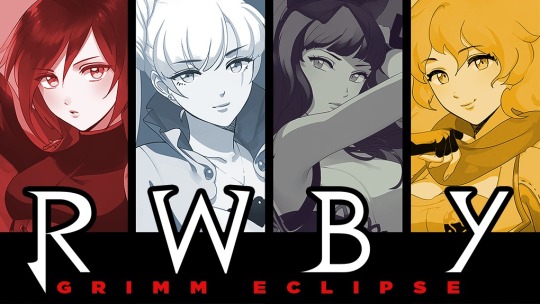
New Post has been published on http://constantlycalibrating.com/rwby-grimm-eclipse-early-axes-facepalm/
RWBY: Grimm Eclipse, Early Axes [Facepalm]
I’m afraid the punny title to this article might be slightly misleading. If you purchase the new co-op action brawler from Rooster Teeth Games in its current state, you will find no axes, early or otherwise. What you will find is a thoroughly competent, although not necessarily fantastic, team-focused brawling game, with a solid link to the animated show it’s been based on.
I have two warnings to give here. The first is that this look at the early access version of RWBY: Grimm Eclipse is written from the point of view of a fan of Rooster Teeth, and perhaps more significantly, someone who became a fan thanks to RWBY over a year and a half ago. The second warning is that this is an early access review, so there is huge scope for change. The comments I make now could be entirely irrelevant when the game goes into full release; I might have an entirely new set of comments to make, and will probably cover the game again.
How on Remnant are they still standing against all those Boarbatusks?
The game has plenty to offer, even at this stage. All four of the main characters, Ruby, Weiss, Blake, and Yang are currently in the game. Each of them has a melee and ranged attack themed to their weapon, which only makes sense, and three special abilities; charges for which are built up by successfully reaching higher combo multipliers. This means the actual brawling itself is solid, performing a rapid series of attacks allows you to follow it with a special ability, then quickly switch back to generic attacks. The binding of each character’s ranged attack to the right-click and their melee to the left allows swift and simple switching between the two. People more experienced in brawler games than me might argue that the brawling is quite shallow, and they wouldn’t be entirely incorrect. With just two buttons to press, plus the special ability hotkeys, it becomes a bit of a button-mash fest that lacks strategy. Building your combo multiplier seems to do nothing beyond providing charges for specials, and there’s no specific timing required. With that said, I personally found that the combat is enjoyable and hugely satisfying.
The campaign is currently quite short, around two hours, although I expect they are planning to expand it. They’re also apparently adding a horde mode.
Of the four current levels, however, two are set in the Emerald Forest, one in Mountain Glenn and one in Mountain Glenn’s underground. The game’s version of these recognisable show locations don’t differ too much from the show, and are thematically pleasing as well as quite visually impressive. Although some players might resent the linear restriction, enforced through invisible walls and impassable ridges, there is some scope for exploration for players to hunt for extra experience.
Character models are well designed and remain true to the show. Even in the first few levels, there is, in my opinion, a nice variation of enemies: a breed of Grimm seen very little in the show called Creeps, the generic Beowolfs, and intimidating Ursa (all three of these have a boss version which is larger, with more health and improved attacks) and a few Boarbatusks. The Boarbatusks are frustrating as they are designed to require strategy to defeat them, but because of high health and AI design that could perhaps use some improvement, any strategy goes out the window in favour of “tank the hits and punch it as much as you can.”
Thematically, the game is satisfying. All the characters are voiced by their actors in the show, as you would expect. They wield their weapons in a way befitting them, and they do all feel different to play, mainly because of their damage and ranged attack. Each of them has a specialised upgrade tree, although it operates slightly differently to the way I expected. Leveling up does not transition between games, so restarting from the first level will always land your character at level one with no upgrades. I can understand this being a gameplay decision, but in-game leveling is done individually and not as a group. This would make it easy for players to steal kills and become over-powered, leaving their co-op partners literally in the Dust. [Ha! -Josh] This isn’t a huge issue considering the game at this stage is exclusively co-operative, but could cause some people to have less fun if they’re unable to get some of their better upgrades.
The number of mobs does scale depending on the number of players in the game, but it appears to be a rudimentary doubling of units. This not only makes “defend the objective” missions exponentially harder (as your objective could end up taking two or more times as much damage as it would if you were alone) but misses out on potential challenges to players, like introducing the tougher monsters earlier in the game. I do prefer an increase in monsters to some other methods. The other option would be a flat increase to the health of all opposing forces, one of the ways the Borderlands series has scaled its co-op, but that would take away the thematically suitable ability to slice your way quickly through hordes of monsters.
I like the way unlocking upgrades is done in-game. Players do have a few upgrades unlocked from the start, into which they can put points earned by leveling, but other upgrades must be unlocked before they can be bought; some to the extent that I don’t know what they do as I haven’t unlocked them yet. Unlocking is done with stated objectives: “revive allies five times”, “kill 3,000 Grimm” and so on. These objectives DO carry between games; completion in one game means you can unlock the ability from the start in another game.
However, I do have some issues, and these mainly stem from me being a fan of the show. There seems to be some balance issues, perhaps mainly in reference to the ranged weapons. I feel Weiss’ is the most powerful, a homing blast of energy which does a significant amount of damage to the target and can fire quite quickly. Blake’s does minimal damage, but can be fired very quickly and has a surprisingly large range for what is essentially a handgun. Ruby’s feels very underpowered, her sniper rifle fires slowly and even knocks her back a little, which does make sense, but I found it more difficult to aim than the others, and it doesn’t do much damage, which is odd considering, y’know, it’s a SNIPER RIFLE. But Yang feels the weakest of all of them, as her range is tiny and even if she hits something within it, her damage is negligible. Not only that but her melee combo does the least total damage. Ranged damages are fine to differ, and I feel it’s only right they do, but there needs to be a little more balance brought into it.
There is very little variation between special triggered abilities; each character seems to have something resembling an area of effect attack, along with a high damage, close range or single target strike. While abilities fit the characters, they do not make use of the capability to tie in with character semblances, something which would bring the game much closer to the show, please a lot of die-hard RWBY fans, and possibly has the potential to be really, really cool.
Ignoring glitches, both technical and visual (this is an early access title after all), my complaints may still seem quite harsh. I’m not making them as someone who hates the game; if anything, I absolutely adore it and my comments are made as a fan who wants to scream “there is a lot of potential here, I know you can improve it!” All of that aside, it’s an early access title, and this is merely a commentary on the game in its current state.
In terms of recommendation, I would suggest that eager fans of the show pick the game up, as long as they maintain awareness that any update made to the game could be the last and, as with all early access titles, there is no guarantee it will ever hit full release. This is admittedly unlikely with Rooster Teeth, but it’s happened before with well-known game companies. Anyone looking for a complete, deep and complex brawler, you won’t find it in RWBY: Grimm Eclipse at this stage, although who can tell what the future holds. I will say that the game has provided me with many hours of fun even at this early stage.
3 notes
·
View notes
Photo
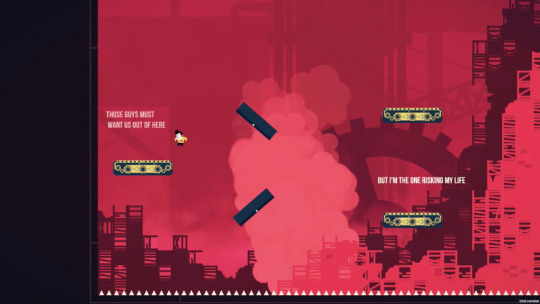
New Post has been published on http://constantlycalibrating.com/klaus-klaus-review/
Klaus? [Klaus Review]
Klaus is a 2D platformer by La Cosa Entertainment with somewhat challenging puzzles — with the occasional more challenging ones — and an emphasis on storytelling, making the player think and, more importantly, feel.
You start in a basement as a man who knows nothing of who he is, where he is, or where he is from. All you have is your suit, tie, pompadour, and Klaus written on your arm. Using basic knowledge of platformers, you set off in search of…, something. Cause, ya know, memory loss and whatnot.
From the get-go, it’s easy to see that Klaus is going to be a bit different from other platformers. Sure, it’s got your basic ‘run to the right’ and ‘jump over the thing’ going for it, but what starts it off interesting is the narrative. Klaus (as he begins to go by) addresses you, the player, directly. He asks for help and to see if you know anything about what happened to him. Naturally you can’t speak, but you can help Klaus in his adventure by using the touchpad on the PS4 Controller which he appreciates greatly as many puzzles can only be solved with your assistance by moving him, or by you completely using the touchpad to move the environment. There are also memory segments hidden within each floor which help you piece together the memory of Klaus himself which adds oodles of story and replayability. You most likely will not get all of them on the first go, as the environment and atmosphere of the game are so engrossing, you just might miss them.
Speaking of environment, let me interrupt my own flow here by saying that this game is absolutely gorgeous; every texture and light pixel has it’s own little trick to it, or at least it makes you believe so. Even down to the little puffs of dust that come up when Klaus runs, this game has some massive detail to it for being made in the Unity Engine; which always manages to surprise me, even today with all the games being made with it. There are a total of 6 “Floors” or “Worlds” in Klaus, each with its own unique design and music, which is wonderful. This game has fantastic sound design! Everything comes together to keep you interested throughout your adventure, while keeping the pace and levels fresh and new. The narrative also uses the environment with the text of Klaus, and his companion later on, appearing in the sky or on walls and such. The emotionally fueled words being much larger while whispers or inner thoughts being much smaller, which only helps to further the impact of the narrative that this game has oodles of.
From the start, you’re interested in what happened to this poor man. Klaus begins his advance up from the basement and along the way you begin to share a bond with him. You cannot speak, but you can listen, and Klaus has a lot going through his mind. As you progress, he begins to trust you more and more, and even goes as far to say you’re his closest friend: “It’s like a buddy cop movie!” Upon reaching the end of the Basement Floor you actually come across another living person(?) named K1 because of the large tattoo on his arm stating, well, K1. He’s a big oaf and immediately takes a liking to Klaus and you, the player, by which he addresses you. K1’s likings are punching, floating, and just having fun in general, which apparently this adventure is chock full of. The introduction of him only seeks to further the story and confusion of the player as you can switch seamlessly between Klaus and K1 while playing. During some game segments when Klaus and K1 must separate to solve different parts of a puzzle, Klaus seems to get more frustrated and lost as he has no clue what to do or where to go. K1 however speaks in clearer sentences about how he has “been through this before” and that “Klaus will one day understand” and addresses you as Player only during these segments. When returning to Klaus he keeps up his oafish appearance as if he knows nothing of what is happening.
The game keeps the narrative going even more so when changing up things later on, with different puzzles and the like on each floor. It even goes as far as to take control of the game completely away from you at one point. That’s right, later on Klaus learns some very crucial information and, whether it’s valid or not, begins to distrust you. At one point completely breaking from you stating “YOU WILL NOT CONTROL ME” and all you can do is move the environmental pieces, doing your best to keep him alive because despite what he seems to think, you are his friend and only want to see him happy again, which the game does a great job at portraying. When it happened to me, I was actually upset and saddened with Klaus, not the game. I wanted him to understand that I cared, but could say nothing and only do what I had done from the beginning, help him. I can’t speak of too much of the story, naturally. But even if I could I probably wouldn’t, because this game needs to be experienced by you yourself to get the full effect.
Now the game isn’t without its flaws, the main one being that while it claims to be challenging, it really isn’t that difficult. A few puzzles had me scratching my head, but I honestly found myself getting more upset with the fact that I overcompensated a jump or kept missing the same platform over and over. Occasionally I just wanted to skip the gameplay part and get to the narrative, but it wasn’t often enough to where I’d say the gameplay was bad, as it’s actually very unique and interesting, just not very difficult — and sometimes annoying, but it’s a platformer so go figure. And I cannot forget (ha) about the memory segments which can be challenging sometimes, and other times just decide that they do not want to be picked up. I’m referring to one in particular on the Ducts Floor, where I dropped down with Klaus and K1 and saw the memory off to the side, but could not move the camera over to the left in order to reach it, even though when I dropped down it looked very easy to get to.
All-in-all though, this game is a gem. It really grips you and, even when you want to quit due to frustrating segments, you will come back and play until you find out exactly what happened to Klaus and (hopefully) help him find what he’s looking for. The narrative is strong and heart wrenching at times, the visuals are wonderful, and there is so much here that if you asked me, I’d tell you to play it and then probably watch you play it because I just really enjoy this game. I believe the development company is a new challenger in the world of gaming and let me just say, kudos to you La Cosa, I will continue to support the games you put out.
For now though, I think i’m gonna go find those other memory segments. I really think I missed something crucial.
0 notes
Photo
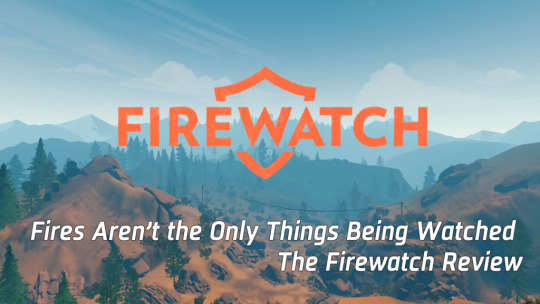
New Post has been published on http://constantlycalibrating.com/fires-arent-things-watched-firewatch-review/
Fires Aren’t the Only Things Being Watched: The Firewatch Review
Firewatch is a first-person mystery/exploration game by Campo Santo. You play as a man named Henry, who takes a job as, you guessed it, a Firewatch Lookout. Set in the isolated wilderness of Wyoming, Henry has taken this job to escape a life which is now falling apart in his eyes. He hoped that this summer job would allow him to relax and wind down, while giving him a chance to escape all the recent events that crashed down upon him.
Oh, poor Henry.
Firewatch’s narrative, visuals, gameplay, and overall feel really make this a unique gaming experience. Naturally I began this adventure believing it to be about the mystery of what is happening out there in the woods: People are missing? Someone is cutting my communications? Where do I go, what do I do, WHO THE FUCK IS IN MY TOWER?! That’s what we were going for, right? Wrong.
I will admit, I went through the entire game in one sitting, beat it, and my first thought was “Eh, that was pretty good”. Don’t get me wrong, it had amazing build-up, and the end wasn’t awful, but once it was all said and done, the mystery wasn’t very big. In fact the whole thing from that perspective was really anticlimactic at best; maybe I had my expectations too high, but it seems like it really gets your heart pounding and then, not much else. I walked away disheartened because I had been looking forward to this for so long and ended up disappointed that the mystery I had been yearning for didn’t end in some big climactic way that left me aghast with bewilderment.
With that I thought I was done, I’d write my review and that would be the end of it. Then I went to bed thinking about it, then had a dream about it, then I woke up with the game on my mind and so I did what any other gamer would do. I played it again, taking my time, experiencing everything I could possibly do and let me tell you something, I was wrong.
[Warning: Some narrative structure spoilers follow. There’s a note after they end.]
This game isn’t about the mystery; not completely. Sure it plays a big part, but ultimately takes a backseat to what I think was the main focus: Henry. You are dropped into the shoes of a man wrecked by emotional distraught and feel like a part of him; handle the feeling of isolation the way he/you would and dealing what is possibly a psychopathic killer that only you interact with, because the only other person you talk to is miles away and has no choice but to take your word for it. And when the end finally came around I realized I wasn’t disappointed, I felt exactly what Henry did. I felt sadness, confusion, and exhaustion. Now the advertising could have showcased this as a bit of a psychological narrative, but that wouldn’t have pulled people in as well as how they did it, but this review is just my opinion so hey, that’s that.
I believe this story is all about Henry, how he deals with the isolation, the fear of possibly being watched, and when shit hits the fan, how he handles it. Most importantly, how everything in his life has gone to shit and now this is happening, right now. He is determined that if there is one thing he can do right, it’s this, and you feel with him every step of the way.
[Narrative structure spoilers end.]
From the start of the game you immediately take to Henry, and you continue to have a certain bond with him throughout your time in the game. You feel his anger, sadness, fear, confusion, and most definitely his happiness. The game immediately begins with Henry getting ready to head out to the wilderness, while taking flashback-like cuts to when his happy life really took off, and through the steady decline of what was to come. No, I won’t tell you everything, but what I can tell you is that this game got to me right from the start, and I had a deep emotional connection to Henry like I’ve never had to any character before.
One of the reasons Henry leaves his life behind is because of something… something that is all too familiar and fresh in my family. However, I’d like to think though that even without my history with it, his story still would have gotten to me as well as it would anyone, because even with that short intro to Henry’s life, which was nothing more than dialogue choices, it was some damn fine writing. In fact, the narrative of this game is near flawless in its execution; I say this because near all dialogue takes place in the form of your only lifeline, a single handheld radio with your supervisor Delilah on the other end, who is your only other contact in this vast wilderness whom you will either grow to love or hate. Your word choices shape your relationship with her and that really adds both to the story and the replayability as you/her can have a different reaction to near everything that happens and everything effects Delilah’s view of you and Henry’s view of her. Delilah is also affected by the world around her as she too has her demons that she may or may not talk to you about depending on your attitude. Also, as she is your supervisor out here, you can also choose whether or not you’d like to report your findings to her should you make some and that can either help or hinder your progress.
The people aren’t just what affects the narrative, as the environment plays a big part as well. I played it on the PlayStation 4 so I only had speakers, but I can only imagine how good this game feels with headphones because the ambience and visuals is oh so good. It sounds and looks like you’re actually in the middle of the woods and if it wasn’t for my girlfriend sitting next to me I might have forgotten I was on my couch. Now this game did have issues running however, as I did get stuck on a few rocks I shouldn’t have and sometimes my frames would drop drastically. In fact at one point my game froze and I had to entirely restart the game. Now I understand on the PC this may happen as the graphical quality and the games ability to run completely depends on your rig, but this is a console. What you see is what you get, and what I got was not optimized for what I should have been getting. However, to my knowledge this is this developer’s first game and given that everything else was done so well, it’s easy to forgive a couple of mishaps, but it is something they should keep in mind for next time. Oh, and Campo Santo, please let there be a next time.
All in all, that’s everything I will say about Firewatch for now. I WANT to say more, but it’s all about the story and I personally refuse to let anything loose about it just yet. Just remember that if you want a great game with a wonderful overarching plot point with a radical (if not anticlimactic) undertone, then please play this game. In fact, just play this game in general if it remotely sounds like something you like, even a little, because I promise you will like it. I want Campo Santo to do more, and I will eagerly await the next instalment whether it be a sequel to Firewatch (which wouldn’t make sense to me) or something entirely different. Until then though, thank you world for tuning in. Stay safe, don’t talk to strangers, and remember:
watch out for fires.
0 notes
Photo
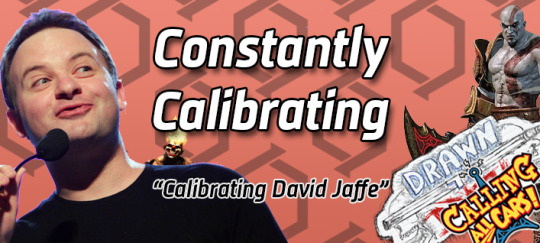
New Post has been published on http://constantlycalibrating.com/181-calibrating-david-jaffe/
#181 - Calibrating David Jaffe
Long ago, when Josh was just a lad of 16 or so, he dreamed that one day he would get to talk to the game developers he had long (since like a week earlier) admired. Last month the first opportunity arose when Chris Avellone stumbled onto our podcast set, ready to chat.
Now, at the start of February, the second of this set has found his way onto our shores. I’m of course speaking of the illusive David Jaffe.
On this week’s show, Brad, Justin, and Josh had a lovely chat with David Jaffe about his upcoming project, Drawn to Death, while delving a bit into transparency in gaming. David may have also humiliated Josh in spectacular fashion. [He did, and it was fucking awesome! -Josh]
After the interview, Josh regaled the team with a story of Justin’s doppelgänger, before going into a spoiler-free review of Rooster Teeth’s Lazer Team — you can find a written review of Lazer Team here.
Make sure you give this wonderful episode a listen and tell your friends.
Until next time, we bid you good sign-off…unless you wish to become one of our Patreon subscribers, in which case we can stick around for a little while longer. *wink wink*
Note: The video podcast will be posted later in the weekend. Our video editor started believing too strongly in his own hype and has since been catapulted into the æther.
0 notes
Photo
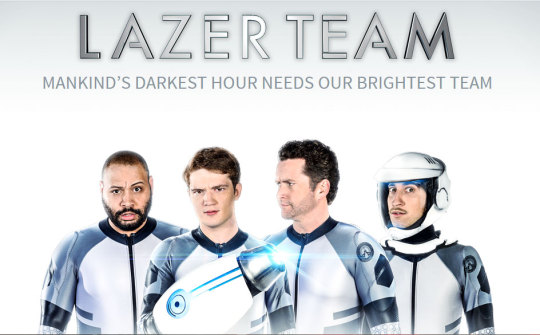
New Post has been published on http://constantlycalibrating.com/lazer-team-review/
Lazer Team Review
I’ll be honest here and say that I don’t know much about Rooster Teeth. I have heard of them through various internet and acquaintance channels, but I’m not familiar with any of their content. The teaser for Lazer Team had been popping up in my Facebook feed for a couple of weeks and when the opportunity arose to review it, I took it. If you’re not familiar with the project it was funded through a very successful Indiegogo campaign and it currently holds the record for highest funded film campaign on that site. With over $2.4 million raised and an initial goal of $650,000, the filmmakers funneled that extra money into talent and technology which in the end resulted in a better product.
When talking about true independent movies like this, you have to view the flick through a different lens. These are not strictly professionals with tons of experience, they are immensely passionate and put a lot of time and effort into the work that doesn’t always turn out to be successful, but that’s not why they did it in the first place.
Just from a technical standpoint Lazer Team sets itself apart from most indies by its look and pacing. There isn’t your typical jerky editing or mismatched color palette. Everything is solid from beginning to end in those respective terms. The dialogue gets a little rough at some points, and when it does that’s when the green horns come out, but it’s never cringe worthy by any means. More like shifting gears too early as opposed to grinding them. The comedy bits need a little refining, but there were some genuine laugh out loud moments.
The compliments extend to the CGI in the movie. We all know how bad CGI can absolutely derail a movie. When it is used it’s used sparingly and smartly. The only part where I raised my eyebrows was the use of a large section of holographic aliens. They looked like weird computer aliens as opposed actual holographic projections. It’s only for a few shots so it isn’t a huge deal.
In the end, I was thoroughly impressed with Lazer Team. That 2.4 million was smartly and well spent. I would gladly back any future Rooster Teeth project.
0 notes
Photo
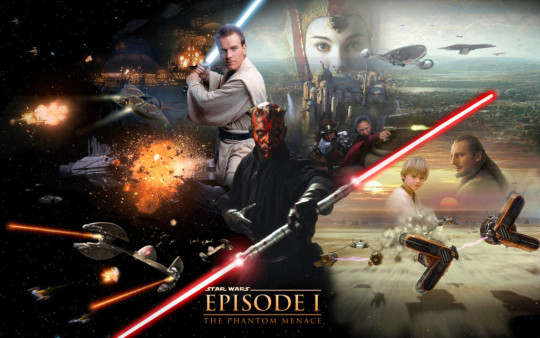
New Post has been published on http://constantlycalibrating.com/making-the-case-star-wars-episode-1-the-phantom-menace/
Making the Case: Star Wars - Episode I: The Phantom Menace
The year was 1998 and I was lying atop my bunk bed at some ungodly hour waiting to view the first footage from Star Wars – Episode I: The Phantom Menace. It had been like 949 years since the last Star Wars movie so we, as fans, were rightfully excited. As you know from my previous post about the Special Editions I was already in love with this franchise and now I was finally going to get a trilogy that I could rightfully relate to. There was a great disturbance in the force that day the first trailer was released, when millions of fans suddenly cried out in joy. Fan excitement was at a fever pitch to say the least. I remember going to Toys “R” Us the day the toy line was released (today they call it Force Friday) and they had a limit to the number of toys each person could buy. Being a young entrepreneur I bought several toys that day for people who had reached their limit already, for a small fee of course. I don’t recall if I saw the movie opening weekend or not, but I know I didn’t camp out or anything (although a group of friends waited in line for almost 12 hours for Episode III), and I again saw it with my best friend. By the time its run ended, The Phantom Menace was seen as a fresh new take on the galaxy far, far away that ushered in a new generation of fans as well as reignited the love of older generations. Or was it?
It’s no secret that The Phantom Menace is loathed by fans. Yes, I said loathed. It’s made fun of for its hokey dialogue, cardboard characters, Jar Jar Binks, Midichlorians (which is kind of cool concept, but that’s for a later time), and pretty much everything else you can think of. Even when discussing which order to watch the movies in most people watch them in what’s called “machete order,” and it totally omits Episode I altogether. I’ve read why Episode I is omitted and it makes perfect sense to me, but I’m looking at the movie on its own merits and compared to its own trilogy. Now, I’m not delusional, Phantom Menace is not a “Good” movie, but it’s not complete garbage either. In fact, I think Episode I is a better movie than Episode II or III. Put your pitchforks away and hear me out. I like to compare it to The Millennium Trilogy (not in quality, but in terms of structure). The first one has a good story, and introduces characters, and backstory and all that, but it doesn’t really relate to the other two in the trilogy. It’s also the most “Star Wars” out of all the prequel trilogy. Hey, I said put your pitchforks away. If you think about it both first movies have somewhat simple premises that eventually explode and spiral out into these dense story lines with high stakes. Episode IV is mostly about getting to Princess Leia while stranded on a “small moon.” We get glimpses of what is going on through dialogue, but it’s not until the last 45 minutes or so that we really find out what is truly at stake here, and most of that is X-Wings flying along a trench on the Death Star. Episode I is about trying to get the Queen of Naboo to Coruscant while stranded on a strange planet so she can hopefully free her planet from the grip of the Trade Federation. We get glimpses of what is truly going on through dialogue and character cameos, but it’s not until the last 45 minutes or so that we really find out what is truly at stake here, and most of that is Anakin flying into a Death Star inspired ship and Jedi’s fighting it out with the Sith. The later episodes focus on the politics and ensuing war that give rise to the Empire.
One thing that most people can agree rocks about Episode I is Darth Maul. I can’t argue with that. Yes, he kicks ass. One thing people also agree on is that it sucks that he dies. I can’t argue with that. Yes, that sucks ass. However, be grateful you ever go t to see him in the first place, with his sweet (possibly) tattooed face and awesome double lightsaber. A double fucking lightsaber! Plus, if you’ve watched The Clone Wars at all you know that he lives on and gets some sweet robot legs. It’s kind of funny, I didn’t actually see the initial altercation between him and Qui-Gon on Tattooine and had no idea it existed until the blu-rays were released. I always seemed to somehow miss it. I had fought him in the Playstation game, but always thought it was some added scene for the game. Darth Maul also brings me to my next point.
Lightsaber battles. Also, Duel of the Fates. Up until this point lightsaber battles had always been somewhat slow between generally older men who seemed like they were demonstrating fencing rather than fighting to the death. Yes, the final battle between Obi-Wan and Anakin is far beyond any previous battle, but this was our first taste of what the young Jedis and Sith could do. When that blast door opens up to John Williams score revealing Darth Maul, if you don’t get goosebumps then you’re not human. I mean these guys are swinging their laser swords around almost too fast for my brain to process. I can only hope that Abrams brings the same amount of kinetic energy to Episode VII.
I can’t apologize for this movie too much because it does make some unnesecary mistakes, but what I can do is sit down and enjoy it and let the rush of that childhood joy flow through me like it did back in 1999.
Also, podracing. You watched that white knuckle podracing scene too, right?
0 notes
Photo
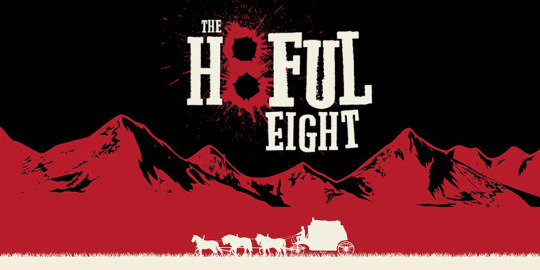
New Post has been published on http://constantlycalibrating.com/the-hateful-eight-70mm-roadshow-film-review/
The Hateful Eight 70mm Roadshow Film Review
It’s hard to believe that Tarantino has only done eight movies. I know he’s had his hand in countless other projects and in his mind Kill Bill is only one movie, but only eight major theatrical releases that he has sole credit on. Now that I think about it, it’s probably a good thing he doesn’t get super technical about it. It’s also hard to believe because he’s been around for such a long time. His movies have been in my movie lexicon since I can remember and it’s only been eight* movies. I like the asterisk, perhaps we should use it from now on, but I digress. Perhaps it’s no coincidence then that his eighth feature film is The Hateful Eight. It was January 2014 when a leaked copy of the script showed up online for all to read, which infuriated Tarantino to the point of a lawsuit and him claiming that he would never make it. Much hulabaloo was raised about him not making it, but I didn’t make no never mind because I knew he was only stamping his feet, if I could easily find tweets from that long ago I would prove it to you. A similar situation arose with Inglorious Basterds, and that time people slammed its quality, but he still made it and it was still damn good. I knew he would eventually start production on The Hateful Eight and here we are.
I categorize Tarantino’s movies into two eras before Kill Bill (BKB) and after Kill Bill (AKB). There are two very distinct styles going on. Movies from the BKB era still pay homage to the movies Tarantino loves yet they are very grounded in reality. This doesn’t mean they aren’t good, because they’re great (with the exception of Jackie Brown), but I get the feeling that he’s trying to fit into a world where he doesn’t belong. Then comes along Kill Bill. Volume 1 takes it to the limit in terms of homage and it really leaves you kind of disoriented at the end. Volume 2 backs off the gas a smidge and shows the beginning of Tarantino to come. Personally I’m really enjoying the AKB era of Tarantino. He seems to have finally found his groove with the right amount of realism and genre homage. I couldn’t tell you for certain what movies specifically Inglorious Basterds was pulling from, but it was refreshing to see something different from him.
When Kill Bill was released I remember Tarantino saying he’d like to take another crack at making a kung-fu movie because he had figured out how to make one while making Kill Bill. Then came Django Unchained, which I consider to be his best movie so far (with one of the best movie characters ever conceived in Dr. King Schultz), which obviously pulled inspiration from spaghetti westerns and Tarantino said the same thing about westerns. It seemed with The Hateful Eight he finally got to make good on that, but did it deliver?
Story wise, The Hateful Eight is very thin. That doesn’t mean it isn’t packed to the gills with scene chomping dialogue and backstory, it’s just the premise is very simple. What you see in the trailers is pretty much it. Kurt Russel is trekking through the wilderness with his bounty when they are forced to stop off at a cabin filled with one, two, six other people and not everyone is who they say they are. Like I just said, Tarantino’s trade mark juicy dialogue and over the top violence is still here, but it doesn’t taste as good as it usually does. There just seems to be something lacking and I can’t quite put my finger on it. I did see it during its 70mm roadshow screening, which I’ll get into in a moment, so perhaps I was distracted by the spectacle. When it is released later in the standard version I would like to see it again and reserve final judgement for then.
What did stand out to me was the score. I’m only familiar with one other Ennio Morricone score and that would be the one from another isolated snow adventure (and one of my favorite movies) starring Kurt Russel, The Thing. When the Overture card showed up on-screen with Morricone’s score I was instantly drawn in and interested. It was one of those scores that is always present, but never distracting. Upon returning home I immediately downloaded it and we listened to it all night as we drove around and looked at Christmas lights. I’m not an expert Oscar predictor, but I would imagine that this would at least get some sort of nomination.
As for the 70mm roadshow I will say this; see it in this version if you can. Ignore all the negativity (even from me) from people online. Yes I was distracted, and yes it was blurry, and yes our projectionist forgot to load the second reel, but I wouldn’t change it for the world. I was distracted because I was constantly wondering what it would’ve looked like if it was the standard version. What alternate takes did he use? Was that person only in the scene because you could see him on the ultra-wide lens? I always say to myself movies aren’t as fun to go to as they used to be. No one raises a curtain anymore, theaters are boring and dark, so on and so forth, but here comes this guy, who loves movies, trying to make it interesting again. It doesn’t matter if the movie is ho-hum, someone is actually trying here. I’m not some film snob either, I think it’s weird that there are people who despise digital and there are the same detractors for film as well. Why can’t we all accept that there are a couple of different ways to film a movie? I’m talking about the experience here. Was it a little weird that they used a 70mm lens on a movie taking place primarily in a cabin? Yes. The best parts are the shots outside. If you ask me this would’ve been better utilized on Django Unchained, with its beautiful southern scenery and action scenes. And yes, it kind of throws you off when halfway through the movie, which is only 2 minutes shorter than The Dark Knight Rises, you get a 12 minute break, but it was a great time to pee. So who cares if it was a little blurry or the sound was kind of off, see a matinée when it’s cheaper, just experience what it was like to go to the movies when going to the movies was an event.
In the end The Hateful Eight doesn’t quite exceed Tarantino’s previous works, I mean look at Jackie Brown, but it isn’t a pretentious piece of crap either, far from it. So if you can go out and see it in 70mm (or any other version frankly), you wouldn’t want to be wishing you had when it’s gone.
0 notes
Photo
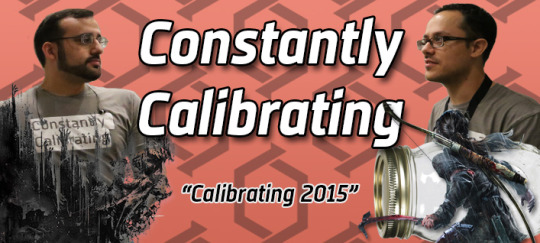
New Post has been published on http://constantlycalibrating.com/177-calibrating-2015/
#177 - Calibrating 2015
As the year 2015 came to a close, our team looked back on what they had accomplished and what events (both literal and figurative) had the most impact on them. Well, the entire team would’ve if Brian hadn’t been lost in time and Justin hadn’t misplaced some of his teeth. That being said, even down two men, Brad and Josh managed to pull themselves together for a heartfelt first time in a hundred episodes duo session of Constantly Calibrating.
It was poignant. It was moving. It was the year of our Lord Garrus’ 2015th year…in review.
#End of the Year Podcast#GameStop Expo#Phoenix Comicon#PlayStation Experience#Rooster Teeth Expo#RTX 2015#The Geekie Awards#Year in Review
0 notes
Photo
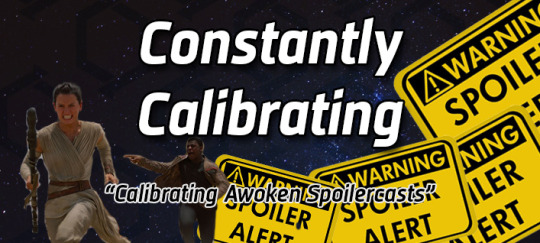
New Post has been published on http://constantlycalibrating.com/176-calibrating-star-wars-the-force-awakens-spoilers-cast/
#176 - Calibrating Star Wars The Force Awakens Spoilers-cast
The evening of Star Wars The Force Awakens release a thought occurred to our intrepid team of podcasters: Holy shit, we’re about to watch a new Star Wars! That excitement was then harnessed, bottled, and subsequently delivered to you, our loyal audience in the form of an intended to be live Star Wars The Force Awakens Spoilers-cast last Friday.
Now that we’re in Christmas week, we’re giving you all the chance to watch and listen to us talk for an hour about everything Star Wars The Force Awakens related. Yes, we spoil everything and as such you should anticipate everything to be spoiled!
0 notes
Photo
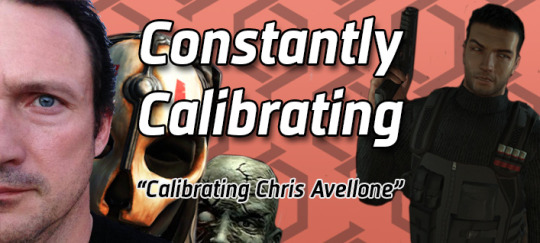
New Post has been published on http://constantlycalibrating.com/175-calibrating-chris-avellone/
#175 - Calibrating Chris Avellone
This week, the guys had the pleasure of talking with Chris Avellone!
In a whirlwind of fangirling, fervently spoken “Fuck You’s”, and in depth looks into the process of producing larger RPGs titles, we had a fantastic time.
One of the larger items that kept coming back in all the discussion, is that sometimes the simplest way to approach a problem is to write it out by hand. That and having someone outside of yourself and your vision to look at your work.
There were a lot of great nuggets in this week’s episode, and we hope enjoy this as much as we did on this episode of Constantly Calibrating!
1 note
·
View note
Photo
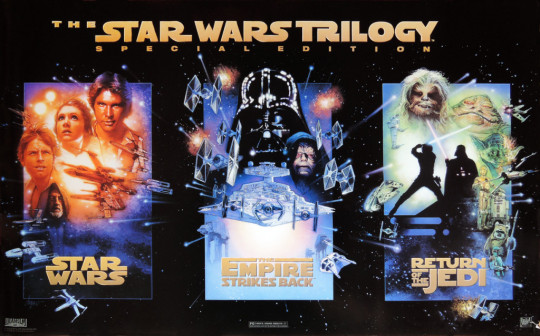
New Post has been published on http://constantlycalibrating.com/making-the-case-the-star-wars-special-editions/
Making the Case: The Star Wars Special Editions
If your first thought when you read the title of this article was “but the Special Editions suck!” then please stop reading and spend your time elsewhere; your negativity is not needed, because I’m about to tell you a little story.
It was January 1995, Super Bowl weekend, and the 49ers were playing the Chargers and little ol’ me realized that I couldn’t walk anymore. It was shortly thereafter that I was diagnosed with Non-Hodgkins Lymphoma.
One day, when I was in a drug induced stupor, my dad was watching this stupid little movie on the tiny TV stapled to the wall in the hospital. It was about some jerk who acquires a laser sword and saves the galaxy or something. I immediately fell in love with this tiny little movie no one had ever heard of called Star Wars. However, I was so whacked out of my gourde that I confused Obi-Wan with Boba Fett and many others. My friend across the street got some Star Wars toys and so then I got some Star Wars toys: my mom went all out and got the Millennium Falcon, Han Solo, Chewie, and Darth Vader (the one with the extended light saber). Then in 1997 George Lucas released the special editions of the Star Wars trilogy. Suffice it to say, I was on cloud 9. I marked the release dates on my Star Wars calendar, how I knew the release dates of movies prior to the internet is beyond me, but I digress. My best friend and I had our tickets and we were finally going to see Star Wars on the big screen. Later, I even got the VHS, which still sit on display proudly in my home, as a gift.
I’m not a Star Wars purist by any means, anyone who claims to be one that was born after me is probably a band wagoner. While sometimes it can be fun to argue the point of Han shooting first, that’s not how it happened for me. It was always the reactionary shot for me. And before you get on your high horse saying “George keeps messing with them,” let me stop you. These movies are not yours. They don’t belong to you. Filmmakers mess with their movies all the time. They’re usually called “Director’s Cuts.” Spielberg altered E.T. (which, yes, he later regretted and reversed). And there are four count them, four, different versions of Oliver Stone’s Alexander, and I am sure there are countless others. None of them, however, have been subject to such ridicule as Star Wars, and why? I don’t know. It probably comes from the same place as the new Ghostbusters hatred. The fundamental stories aren’t changed. Luke still joins the Rebellion to fight the Empire, Darth Vader is still Luke’s father, and Han Solo is still a badass.
I will grant you that there are some weird changes, like putting rocks in front of R2-D2 when he’s hiding from the Jawas, or swapping Sivrak (Wolf man) for a hooka smoking alien, or Darth Vader yelling “Noooooooooooooooooooooo!” as he tosses the Emperor down the shaft. But there are tons of cool additions like added scenes with Jabba in Mos Eisley, the Wampa on Hoth, cooler explosions, and expanded set pieces in Cloud City. My favorites happen to be the added scenes with the Wampa and the updated Sarlaac scene. I only wish they could have added more AT-AT or Rancor action. Most of the changes were made to update the effects used or to tie in the original trilogy with the prequels. This isn’t completely unheard of in other mediums, for example Stephen King did it with The Gunslinger. And yet so many people continue to tear apart the thing they claim to love.
Don’t get me wrong, I completely support anyone’s wish to see the movies in their unaltered state. And to be honest, if they ever were released in glorious hi-def I would no doubt be first in line to purchase them. I’ve spoken out about some of the changes in the past, but I’ve come to regret those statements and seen the errors of my ways, because like I said earlier, the special editions are my Star Wars. I know nothing else. I own the unaltered versions on both Laser Disc and DVD, but I don’t feel the need to watch them. I love these versions too much. No one is ruining your childhood (which is another argument for a later date) by updating and altering these, or removing the Expanded Universe from cannon. You should just count yourself lucky that you even got to experience and enjoy these. I’m reminded of Fanboys and that guy who recently passed that was able to see Episode VII before he joined Obi-Wan, Yoda, and Anakin. I bet he never took these movies for granted and appreciated every second of it. So the next time you feel the need to shit on these exemplary movies, or the prequels for that matter, realize that you might be offending someone who truly does love these. You should also remember why you fell in love with these in the first place.
It’s the stories and the characters, not the effects.
0 notes
Photo

New Post has been published on http://constantlycalibrating.com/bnat-2015/
A Look at Butt-Numb-A-Thon 17: The Ass Awaits
Butt-Numb-A-Thon, or BNAT as I like to call it around my parents, is an annual celebration of cinema unlike any I’ve experienced.
Entering its seventeenth year, this 24-hour marathon occurs the weekend closest to Ain’t It Cool News Founder Harry Knowles’ birthday and showcases an impressive array of new and vintage titles to a small, select audience. In order to enter one of Tim League’s Alamo Drafthouse theatres, each of the approximately 200 film lovers must submit a 21-question application that blows Knowles away. Questions range from “What film have you watched more than any other” (The Matrix!) to “what would happen if your parents were possessed by Deadite spirits” (I won’t post my answer here but it involves a titanium spork, JET SONG from West Side Story and the Necronomicon).
This year’s volume, Butt-Numb-A-Thon 17: The Ass Awaits, took place December 12th-13th and treated us to eight incredible vintage films, most projected in their original format, and three upcoming releases.
This year’s event, my third in the last 10 years, was held at the South Lamar Drafthouse in Austin, Texas and began with a vintage film I’ve requested in previous applications, George Steven’s Gunga Din. After announcing it, Knowles pointed out how thematically similar it was to Star Wars Episode 1: The Phantom Menace and how a certain Gungan is modelled after the titular Din.
To see Gunga Din in 35mm was an awesome treat. Nearly 80 years on, the chemistry between Cary Grant, Victor McLaglen, and Douglas Fairbanks, Jr. is still rousing and sharp as ever and the action feels remarkably loose and fresh. A punchy epic adventure flick that helped influence Indiana Jones and The Temple of Doom, the original trailer of which preceded this feature, and countless others.
Din was followed by another film about troops in a wild and lethal environment, Walter Hill’s Southern Comfort. If you’ve seen Predator or Deliverance, then you already have a fair idea of the tone. This dark thriller is about a boisterous, ragtag Louisiana National Guard squad inadvertently finding themselves hunted deep in the creepy backwoods by bayou locals. Most in the audience hadn’t seen it, but it quickly became a surprise favourite. Things start out simple enough, introducing clashing personalities (the serious commander, the joker, the popular grunt, the married man, the religious one, etc.) but quickly go from bad to worse thanks to a series of simple mistakes. It hooks you after its opening by making you feel like anyone could die at any moment.
Next up was a lesser-seen RKO film from 1942 called Syncopation, not to be confused with the 1929 RKO film of the same name. Syncopation was an intriguing slice of history to be made during that time period. A WW2-era shot film set in New Orleans and Chicago depicting the appropriation of music by white performers from black performers and the subsequent rise of swing from 1906-1916. It doesn’t feel as tight in its second half, but the music is outstanding throughout and it was a delight to experience a lesser-known film from William Dieterle’s impressive career.
The fourth film was the premiere of Eddie The Eagle, a British sports biopic directed by Dexter Fletcher and produced by Matthew Vaughn starring Taron Egerton and Hugh Jackman. It is based on the amusing, true tale of Britain’s first major ski jumper, Michael Edwards. The film is buoyed by a fun performance from Jackman as a drunk, American former champion who takes young Eddie, played sweetly and eagerly by Egerton, under his wing. Egerton not only provided a Q&A with Knowles, but stayed to experience the screening with the BNAT crowd. He sat in my row and laughed and cheered along with us. I found Eagle to be charming, if a little safe as an underdog film. A fun, simple crowd-pleaser.
The next film Knowles unearthed was the first stop-motion animated feature film ever made, The Tale of the Fox. Unless you lived in Europe 80 years ago, the chances are slim you saw it, even in this good a condition. This subtitled B&W pioneer chronicles the antics of a wily fox in an anthropomorphic kingdom declared vegan by their ruler lion. The stories reminded me somewhat of the Redwall series, as the fox, Raynard, outwits attempts to murder him. If you love film history, see this. It’s a remarkable achievement with fur, breathing, gait, even eye movement taken into account, to say nothing of the more complicated crowds or battle scenes with dozens of moving figures.
The stop motion animation transitioned nicely into modern puppet animation for the sixth film, Anomalisa, the first time a film that played Fantastic Fest also played BNAT. I vaguely knew of this Charlie Kaufman written/produced/directed comedy-drama and seeing it without knowing much really helped blow me away; easily one of the most intimate and oddly relatable films I’ve seen this year. I was so caught up in the technical wonder — one shot in particular follows the main character from the lobby of his hotel, up an elevator, out into a hall and into his room without cutting — that I’d like to go back and pay closer attention to the characters and voice work. There are only three performers but David Thewlis, Jennifer Jason Leigh and Tom Noonan are superb. A rare, wonderfully made animated film for adults.
Following Anomalisa, a BNAT first occurred: a wedding ceremony for a pair of BNAT veterans, Lola Hensel and George Hickman, featuring Knowles, who is an ordained minister, marrying them, and none other than Elijah Wood as their ring bearer!
For the evening’s seventh film we were the first to view a newly remastered 4K print of Don Coscarelli’s cult horror classic Phantasm, restored by Bad Robot. Coscarelli and star Michael Baldwin were on hand to tease us with a preview for a new series taking place 36 years later, featuring returning stars Reggie Bannister and Angus Scrimm. Having last seen Phantasm on VHS decades ago, this print was an incredible new experience. The jump scares, foreboding shadows and sheen on the silvery death spheres never looked or sounded so great.
To usher in 4am, Knowles chose 1959’s low-budget, hokey sci-fi The Angry Red Planet. Maybe it was the monotonous dialogue, but things got a little blurry in these wee hours and I may have stolen a few winks during this, but I remember something about a giant space spider?
A video played next that we’re unable to talk about at this time. [Ed: Tease.]
Tim League tipped Knowles off about the next film, Ninja Busters, a super silly 80s kung fu comedy about two dopes who enrol in a dojo to battle gangsters and ninjas. Seriously, so bad it’s funny!
If I thought Phantasm would be the only cult sci-fi film this year, I’d be wrong. Next up was Logan’s Run. One of the greatest scifi films; I thought it held up surprisingly well. I’d love to see this get a 4K restoration treatment next!
For the finale, AICN’s Capone and star Will Poulter introduced Alejandro G. Inarritu’s The Revenant. This will make my top ten films of the year. It is a wild, bloody and brilliant period revenge drama. It’s a work by a director at the top of his game. Like Apocalypse Now and Aguirre, The Wrath of God, it had me literally on the edge of my seat. Stunningly shot with a realism that seems almost alien, the crowd went from cheering wildly to deathly silent — there are many terrifyingly real moments and you can’t help but feel for the ordeals Leonardo DiCaprio’s Hugh Glass survives. This might be too gruesome and gory for many but it is an impressive achievement on all levels and a great note to have ended this year’s BNAT on.
Thank you to Harry for inviting me and my awesome row-mates, Josh Alder, David Jaffe, Brian Day and Eric Burgess for making it all the more memorable and movie break friends Alan Cerny, Eric Vespe, JJ Castillo, Brian and Angela Behm, JJ Knowles, Windy Bowlsby, Jen Bryan and Melissa Kaercher and thank you for reading my recap this year!
0 notes
Photo
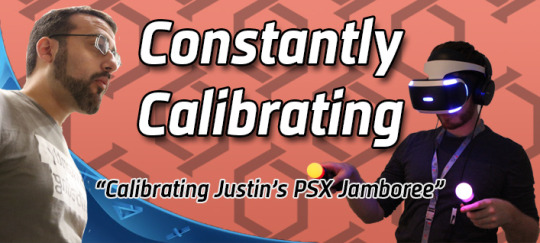
New Post has been published on http://constantlycalibrating.com/playstation-experience-2015/
#174 - Calibrating Justin’s PSX Jamboree
This week, Justin took the helm and went full steam ahead into his weekend that was the PlayStation Experience 2015.
From Playstation VR to a complete decade of Uncharted to totally no new Crash Bandicoot in the works, Justin was unstoppable in his coverage. And there was a lot that was revealed (but not leaked!), and we get into a good deal of it.
We also said Yoshimitsu a bunch of times. Any more and we’ll have to start a counter.
We were enthralled, and we hope you will be too with this week’s Constantly Calibrating!
0 notes
Photo

New Post has been published on http://constantlycalibrating.com/calibrating-game-fatigue/
#173-Calibrating Game Fatigue
There is something magical when you pick up a game and enjoy it thoroughly.
But what happens when you no longer play, or even care to play?
This week, the Brad, Justin, and Brian talk about game fatigue; those times when we set games down. For some, it is that they no longer care for the title or series. For others, it is a lack of interest, or even that their interest has shifted to something shinier.
What makes you set down games and stop playing them?
Let us know as you listen to this week’s Constantly Calibrating!
0 notes
Photo

New Post has been published on http://constantlycalibrating.com/black_friday_2k15/
#172-Calibrating Black Friday Madness
This week, the guys pondered the depths of human depravity.
Or in other words, Black Friday.
The concept of Black Friday in a digital and connected age is seeming more and more unneeded as we are able to search and parse for our consoles and games online. Is there any merit to Black Friday shopping, or are we just feeding into the machine of corporate america?
We discuss this and actual ethics in game journalism on this week’s episode of Constantly Calibrating!
0 notes
Photo
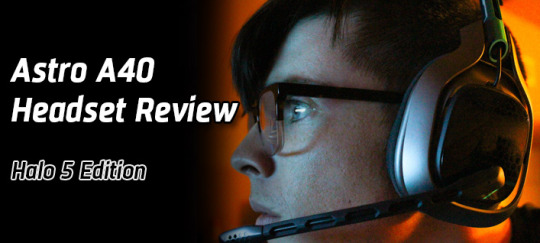
New Post has been published on http://constantlycalibrating.com/changing-way-play-games-astro-a40-headset-mixamp-m80-review/
Changing the Way I Play Games: Astro A40 Headset & Mixamp M80 Review
As I’ve talked about on the podcast, I really enjoy Halo 5 and am really loving it and the way it plays. Of the things that really get me into a game, story being a big part, as well as mechanics; bar none, the thing that gets me into games like nothing else is an auditory experience. You can have the best visuals and the tightest level design this side of Sangheili, but if your audio is sub-par, then I’m going to pass over your game. What brought out the beauty of 343 Industries’ newest entry in the Halo universe for me was the Astro A40 Headset & Mixamp M80 for the Xbox One. Astro sent us out the Halo 5 branded A40’s to test out, and upon opening the initial packaging, I was impressed with the quality of their presentation. The sleeve was informative, but was outdone by the interior packaging. Solid construction paired with fairly well thought out design was enticing and is pleasant, even after removing the headset. In removing the headset, it had a fair weight to it and as with the packaging, the construction was solid. When dealing with audio equipment, well made products are reassuring to the assumed quality of the rest of the unit because manufacturers can set a precedent for themselves by building trust through quality. Already, Astro had me on board, even before I got everything set up. The fact that Astro gives clear instructions to set up their product was really heartening to me. They knew what their process was going to look like right out of the box, and tried to make it as simple for the user as possible. Within minutes I was up and ready.
Initially, I was kind of underwhelmed. Sure the sounds of the dashboard sounded tight and popped well, but there was nothing to indicate to me that this headset was any different from my dingy pair of another branded gaming headset I’ve held onto for a few years. It was not until I entered into Halo 5 and loaded up the campaign that I truly appreciated what went into not only the production of the A40s, but the audio production of the game. The rich soundscape that greeted me was not expected in the slightest. I was not prepared for the surround featured or how fine tuned the speakers were. Not being well versed in gaming headsets, this was a welcome change to the way I had been experiencing games. I was able to load up many different titles, and within each I was given a new appreciation of the work that had went into the audio engineering of that game. Astro has worked to add value to the gaming industry, while trying to uplift the work of countless creators to bring their dreams to life. As an audiophile, being able to pick up and pick out individual sounds is crucial, and was an added boon to both solo and multiplayer components. With solo testing under my belt, I took the Astro A40 headset and Mixamp M80 into multiplayer with friends to test out audio quality both sent and received. Right of the bat, my friends could notice a difference in the quality and clarity of my voice, comparing it to condenser mic levels of quality. On my end, it was the clearest I’ve heard group audio on any gaming platform. It made playing multiplayer matches a much more cohesive and simple process. As referenced above, the fact that I can pick out audio clues was imperative and helpful in multiplayer matches without a status indicator, and helped greatly in zoning in on enemies. Overall, I was really impressed with the quality and thought that was put into the A40 Gaming Headset, but my one qualm was with the drain on battery on the gaming controller. While the longevity over a 2 week period is admirable, once it starts to drain the last dregs of the battery from the controller, the experience is hindered quite a bit. With the entry point for this headset and the quality provided, I would think that there would be some provision for this, but not at this level it would seem. Perhaps a pair of rechargeable batteries for the mid range sets would be comparable to make up for the added drain to the controller. But that’s the most I could find wrong with this headset.
0 notes